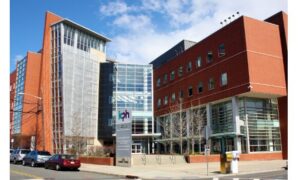Gardens have always been an integral part of human culture, providing a space for relaxation, contemplation, and connection to nature. However, as the world continues to rapidly change and evolve, so too will our gardens. In this article, we will explore how modern gardens are likely to evolve in the future, taking into account technological advancements, environmental concerns, and shifting social trends.
Technological Integration
One of the most significant changes we can expect to see in modern gardens is the integration of technology. As smart homes become more prevalent, it’s likely that our gardens will also become “smart,” equipped with sensors, automated irrigation systems, and even robotic lawn mowers. These technologies will allow us to better monitor and manage our gardens, saving time and resources while also reducing our environmental impact.
For example, sensors embedded in the soil can detect moisture levels, pH balance, and nutrient content, providing data that can be used to optimize plant growth and reduce water consumption. Automated irrigation systems can also help to conserve water by delivering the precise amount of water needed at the right time, rather than over-watering plants which can cause waste and harm to plants. Similarly, robotic lawn mowers can keep our lawns perfectly trimmed without the need for harmful gas-powered machines or manual labor. These types of technologies will become more common as their cost reduces over time, making them more accessible to the general public.
Focus On Sustainability
Another major trend we can expect to see in modern gardens is a greater emphasis on sustainability and eco-friendliness. As more people become aware of the urgent need to reduce our carbon footprint and protect the planet, gardens will become a vital part of this effort. This means that more people will be growing their own food in their gardens, using organic and sustainable practices that promote biodiversity and protect pollinators.
Gardens can also be designed to capture and store rainwater, reducing reliance on municipal water sources and helping to prevent runoff and erosion. This can be accomplished through the use of rain barrels, permeable paving materials, and green roofs. In addition, composting and recycling can help to reduce waste while also enriching the soil and promoting healthy plant growth. These practices will become increasingly important as we seek to mitigate the effects of climate change and protect our planet’s biodiversity.
Smaller Spaces
A third trend that is likely to impact modern gardens is a shift towards smaller, more compact spaces. As urbanization continues and population density increases, people will need to make the most of the available outdoor space. This means that gardens will need to be designed to maximize functionality and versatility, providing multiple uses in a limited area.
One example of this trend is the rise of vertical gardening, which involves growing plants on walls or in stacked containers. This allows people to grow more plants in less space, while also adding visual interest and texture to the garden. Similarly, multi-use furniture, such as benches that also function as planters, can help to maximize space and create a more functional garden. These types of innovations will become increasingly important as urbanization continues and people seek to create green spaces in the midst of concrete jungles.
Personal Spaces
A fourth trend that is likely to impact modern gardens is a greater emphasis on personalization and self-expression. As people increasingly seek out unique experiences and opportunities for self-expression, gardens will become an extension of their individuality and creativity. This means that gardens will need to be designed to reflect the personality and interests of the gardener, rather than conforming to traditional styles or trends.
For example, some people may choose to incorporate unconventional materials into their gardens, such as recycled metal or glass. Others may opt for more colorful and eclectic plant combinations, creating a vibrant and dynamic space. The possibilities are endless, and this trend towards personalization and self-expression will continue to shape the way we think about and design gardens in the future.
Summary
Modern gardens are set to evolve in numerous ways in the future. With the integration of technology, gardens will become smarter, more efficient and easier to manage. Sustainability and eco-friendliness will become a major focus in modern gardens, with people adopting organic and sustainable practices to help protect the planet. As cities become more crowded, gardens will also need to become more compact and versatile, utilizing vertical gardening and multi-use furniture to maximize space. Finally, as people continue to seek out unique experiences and opportunities for self-expression, gardens will become an extension of individuality and creativity.
Overall, these trends represent a positive shift towards a more sustainable, efficient and personalized approach to gardening. By embracing new technologies, adopting eco-friendly practices, and embracing creativity and individuality, we can create gardens that not only enhance our homes and outdoor spaces but also contribute to a healthier and more sustainable future for our planet. The future of modern gardens is exciting, and we look forward to seeing how these trends continue to shape and transform our outdoor spaces in the years to come.



































